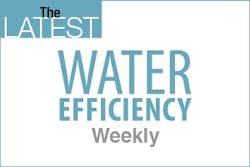White House Calls for Water Innovation
In a swift and significant nod to the Water Industry, the White House on December 15, 2015, called for meaningful water innovation just three days after the conclusion of the 2015 United Nations Climate Change Conference in Paris.
The announcement from the White House came at the start of the White House Roundtable on Water Innovation. The Roundtable was a memorable day for our Water Community and a true turning point for the water innovations sector.
The Paris climate conference resulted in a landmark global agreement on the reduction of climate change, “the Paris Agreement,” representing a consensus of the 196 countries in attendance.
Shortly thereafter, the White House announced its “Public-Private Innovation Strategy to Build a Sustainable Water Future” in which it cited the Paris accord and made known its aggressive two-pronged water strategy. The administration’s intent is to jumpstart a public-private partnership that: (1) will be “led by Federal agencies to address the impacts of climate change on the use and supply of our nation’s water resources”; and (2) “calls on private sector and other stakeholder groups to help significantly scale up research and investment in water efficiency solutions.”
The timing and scope of the White House’s announcement signals a new era in which the import of water policy will surely rise with the tide of climate change governance both in the U.S. and abroad.
The Administration’s strategy specifically calls for:
• Boosting water sustainability and long-term water security by increasing uses of water-efficient and reuse technologies; and
• Promoting and investing in breakthrough research and development (R&D) that will reduce the price, energy costs, and emissions requirements of new water supply technology to achieve “pipe parity” in the next decade.
It is noted that better management practices could result in reduced water usage by 33 percent, bringing the U.S. closer in line with other industrialized nations and account for a national reduction of total CO2 emissions of 1.5 percent annually. The reference to “pipe parity” refers to garnering non-traditional water sources, like saltwater or brackish water, at costs equal to current processes for delivering fresh water.
A more detailed report, outlining the specifics of the water innovation strategy is forthcoming. The report, and the strategy, will be greatly influenced by the conclusions and outcomes of the Roundtable on Water Innovation that was hosted by the White House this week. I was in attendance at the Roundtable as were other leaders from industry, academia, and Federal, State and local government. Our charge was to discuss and consider how an aggressive innovation agenda can help America meet the challenge of a constrained water supply and increase the resilience of our businesses and communities in regions that will be affected by increasingly severe and lengthy droughts.
Dr. John P. Holdren, Assistant to the President for Science and Technology, Director of the White House Office of Science and Technology Policy, and Co-Chair of the President’s Council of Advisors on Science and Technology (PCAST), in his introductory remarks at the Roundtable, tied the consequences of climate change to water availability via six distinct impacts: (1) increased evaporation of available water due to temperature increase; (2) shifting atmospheric circulation patterns which adjust water distribution; (3) more moisture in the atmosphere due to temperature increase which results in more severe storms that adversely affect storm runoff; (4) less mountain snowpack due to more rain and less snow in mountainous areas; (5) earlier melting of snowpack due to increased temperatures; and (6) temperature induced shrinking of glaciers.
In furtherance of the Administration’s new public-private water strategy, on March 22, 2016 (the United Nation’s World Water Day), the Administration will host a White House Water Summit to raise awareness of water issues in the United States, and to catalyze ideas and actions to help build a sustainable and secure water future through innovative solutions. This event, which builds on the December 15, 2015, White House Roundtable on Water Innovation and other Administration activities, will bring together representatives from Federal, state, regional, local and tribal levels, and from other stakeholder groups, to discuss and advance progress in this important area. The White House has issued a call for input activities and actions to build a sustainable water future that could be announced at this event.
Other significant steps include:
• A new Center for Natural Resources Investment at the U.S. Department of the Interior;
• A new $20 million funding opportunity in water and energy efficiency grants through the WaterSMART Water and Energy Efficiency Grant Program at the U.S. Department of the Interior;
• A new interactive website by the U.S. Department of the Interior to provide important data from multiple sources to highlight the ongoing drought in the Colorado River basin; and
• A call for new applications for research, laboratory studies, and pilot projects that target increasing the usable supply of water in the United States as part of the Desalination and Water Purification Research Program (DWPR) at the U.S. Department of the Interior.
Finally, the Administration committed to further actions directed to assisting communities suffering from drought. The increased commitment reflects a multi-agency and multi-jurisdiction effort designed to meet ever increasing drought-related challenges. In the past fiscal year alone, the Federal Government invested more than $270 million in resilience and response measures for drought-stricken communities.
Video of the White House Water Innovation Roundtable Discussion, held on December 15, 2015, via YouTube.

